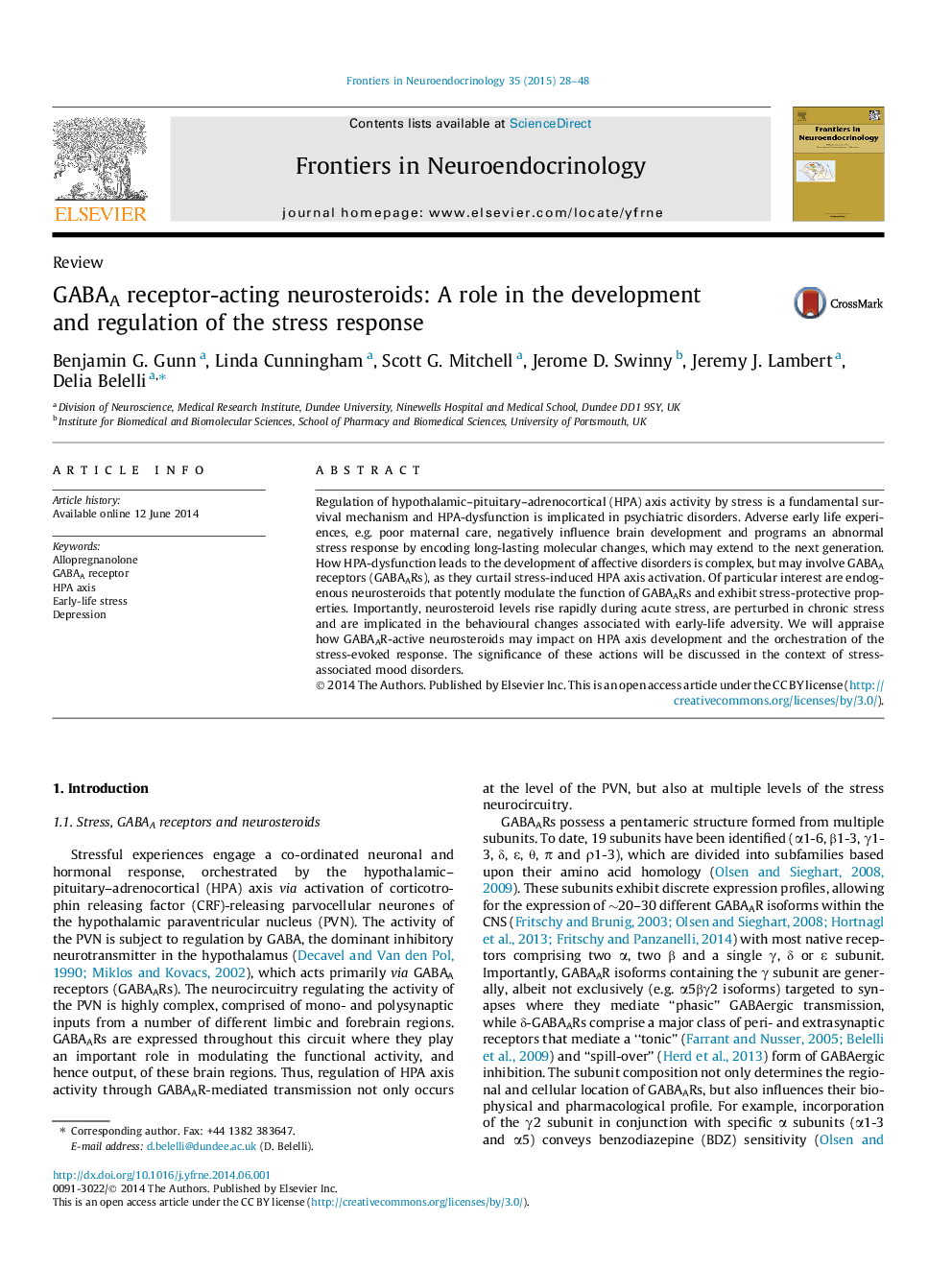| Article ID | Journal | Published Year | Pages | File Type |
|---|---|---|---|---|
| 5900613 | Frontiers in Neuroendocrinology | 2015 | 21 Pages |
â¢GABAA receptors (GABAARs) curtail stress-induced activation of the HPA axis.â¢Stressful challenges evoke de novo brain synthesis of GABAAR-active neurosteroids (NS).â¢NS inhibit the output of CRF-releasing neurones of the hypothalamus.â¢NS actions in the hypothalamus are blunted in rodent models of early-life adversity.â¢NS may be important molecular messengers in the programming of the stress-response.
Regulation of hypothalamic-pituitary-adrenocortical (HPA) axis activity by stress is a fundamental survival mechanism and HPA-dysfunction is implicated in psychiatric disorders. Adverse early life experiences, e.g. poor maternal care, negatively influence brain development and programs an abnormal stress response by encoding long-lasting molecular changes, which may extend to the next generation. How HPA-dysfunction leads to the development of affective disorders is complex, but may involve GABAA receptors (GABAARs), as they curtail stress-induced HPA axis activation. Of particular interest are endogenous neurosteroids that potently modulate the function of GABAARs and exhibit stress-protective properties. Importantly, neurosteroid levels rise rapidly during acute stress, are perturbed in chronic stress and are implicated in the behavioural changes associated with early-life adversity. We will appraise how GABAAR-active neurosteroids may impact on HPA axis development and the orchestration of the stress-evoked response. The significance of these actions will be discussed in the context of stress-associated mood disorders.
